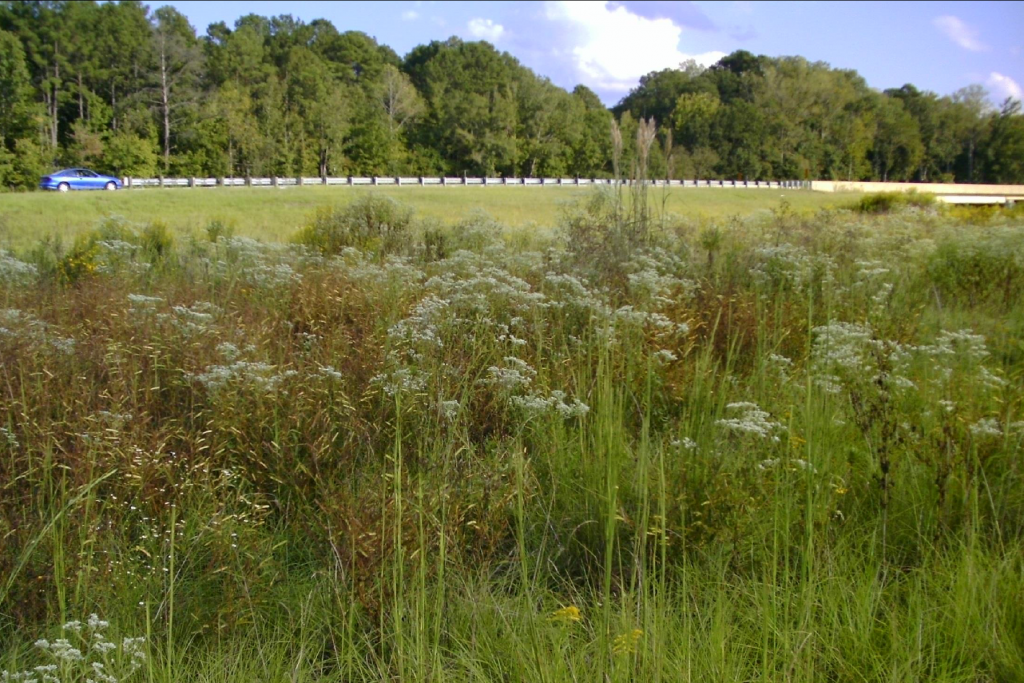Posted by Madelyn Mateo
Are weeds choking your productivity? Are you worried about sight-line visibility, fire hazards, or maintenance costs?

What about the damage those invasive species are doing to your roadside, right-of-way ecosystem? Invasive species have significant consequences for successful vegetation management and just letting them run amuck is not a sustainable option.
Invasive weeds can take hold and become a problem when land is not managed properly. Construction sights that disrupt the soil are fertile fields for invasives. Certain mowing practices and herbicide use can enhance the reproduction of invasive weeds and contribute to herbicide resistance. Thankfully, there are vegetation management best practices that can effectively control the spread of unwanted plants and promote an economically and ecologically sustainable ecosystem.
As is the case for all managed ecosystems, man is in a continuous struggle to maintain the order of an artificial system. For example, crews need to ensure good driver visibility on roadways, keep power lines free from potential tree damage, and make sure trains stay on their tracks. If neglected, the vegetation will revert to its natural state. It costs an estimated $120 billion per year to control the more than 3,500 invasive plant species and to repair the damage that they cause. Maintaining roadside vegetation in a desirable state requires significant effort and vigilance. We want our roadside ecosystems to be a rich habitat of desirable grasses and other plant species critical to soil stabilization. And we want to prevent the spread and establishment of invasive species and other second (woody species) or tertiary (trees) plants. Practitioners must be diligent about the selection, timing, and implementation of resources used in any vegetation management program.
Integrated Weed Management
The best and most economical approach to invasive weed management is prevention. If invasive weeds are never introduced, or are prevented from becoming established, then desirable species have limited competition for long-term persistence. Yet the weeds do invade. They hitch a ride on vehicles’ wheels and on people’s clothing and boots they hide in contaminated seed, sod, or mulch; they nestle happily in disturbed soil; they thrive when herbicides stop working or when mowing cycles actually promote their growth. And they love to be neglected. The first step in combatting the invasion is to prevent them from being introduced, to detect their presence early, and to control their spread with a best practices vegetation management plan. Failure to do so will undoubtedly lead to a costly and lengthy battle against the incessant and rampant spread of those unwanted plants. In some cases, the only solution is total remediation and revegetation.

So how do you go about developing a strategic plan for vegetation management to prevent the spread of invasive weeds? Agronomists must properly incorporate various practices and technologies in a comprehensive management plan for long-term control. This includes proper herbicide selection and rotations, timing of chemical and cultural practices such as mowing, and strategically planting desirable species that can be effectively established and will essentially outgrow the invasive weeds. The planting, mowing, and herbicide application needs to be carefully timed with the help of technology to inhibit the growth and reproduction cycles of invasive weeds and promote the desirable native plants. Improper integration of technologies or desirable species can exacerbate the spread of invasive weeds in managed areas that could lead to greater costs for remediation.
Key Core Concepts
Work Territories are prioritized based on work history, then a Patrol is deployed on a Work Territory to a patroller, the patroller creates Prescriptions or Tasks during the Patrol, the prescriptions are separated and added to Work Groups based on criteria such as the crew, job number, etc. The crew then completes Prescriptions in the Work Groups assigned to them and finally a QA/QC Patrol can be assigned to identify Prescriptions that require rework. All of this is available in a safe cloud environment with real time visibility on a Dashboard for managers and reporting agility.
